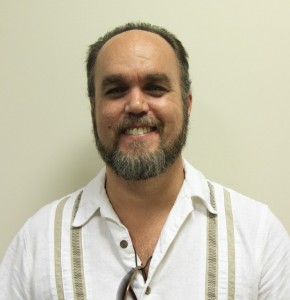 My first “live” Restorative Circle happened a few days ago, in Rochester, New York. The circle started with seven people, and it ended with more than 50. It had really started a few weeks before.
My first “live” Restorative Circle happened a few days ago, in Rochester, New York. The circle started with seven people, and it ended with more than 50. It had really started a few weeks before.
My partner and I had been hurt by an email that I had received, an email that we perceived as judgmental and prejudiced. The author sat across from us, along with one of her friends. We too had brought a friend, since he had been affected by the events and subsequent actions. We were five people in a conflict, with hurt feelings and misunderstandings, but also with a commitment to facing our conflict head on.
Accompanying us were several facilitators. Through their questions we began to understand one another, to accept responsibility for ourselves, and to figure out what we wanted to do next. The questions themselves were few, and scripted, but they worked.
I am convinced these questions worked for us, in Rochester, N.Y., because they had been honed a world away, in the favelas of Rio de Janeiro. In those communities -- slums unlike any in the United States, built on the steep hills around Rio by people who can’t afford to live anywhere else -- where there is no access to basic infrastructure, where drug gangs administer justice, this process had been birthed.
The people themselves, who wanted a system of justice that made them safer, developed it. Murders and other serious crimes were common. The police and government weren’t bringing justice. Instead they had nightly gun battles with the gangs. They were not making the situation any safer.
Part of that community was an expatriate Englishman, Dominic Barter, who had begun the process by walking about the favelas and talking to people, asking questions and listening to the answers. “What works?” “What’s not working so well?” “What would you like to see happen?” The questions were deceptively simple.
Now, nearly 20 years after Barter walked out of his door and up the hills near his home in Rio, I found myself listening to a few more simple questions, thousands of miles away from the favelas.
But I was caught in that piece of the human condition that is universal, that sometimes we call conflict, sometimes we call crime, that, big or small, is an integral part of our lives. “What happened?” “What do I want known about it, and by whom?” “What were we looking for when we acted?” “What would we like to see happen next?”
Sometimes we cause harm, sometimes we are harmed, sometimes we are part of the wider community. All of us will play these roles, and the needs and responsibilities of all must be addressed if we hope for real justice in our lives and in our society. These questions did that work, without affixing blame and deciding punishment. They led us towards wholeness.
For me this is restorative justice, and this particular approach to restorative justice, known in English as Restorative Circles, draws closest to the heart of what it means to be human. It most fully sheds the patterns of punitive justice with which we are so familiar, which have existed for so many generations that they seem to be part of the natural order.
Howard Zehr, in his book Changing Lenses, writes about the concept of shalom that is implicit in the Old Testament. This word, often translated as “peace,” carries a much deeper meaning. It is the peace that arises from real justice, including what we today might call social justice. It acknowledges all who are affected by harmful actions, and it is permeated with mercy.
This vision of what justice was before it was sieved through the history of Western civilization, and what it could be again, appeared in front of my eyes this week. In the middle of our circle two people entered, concerned about the process and the way the circle was being conducted. This was another conflict, yet we faced it with willingness and compassion. It was messy, but somehow things moved forward. Now instead of seven people there were 70 in the circle. The circle had grown, and in my mind it stretched on and on, encompassing everyone who was connected to every person there.
This vision, for me, is not mystical, or at least not purely mystical. Restorative Circles are now embedded in the official criminal justice system of Brazil. All around me were people who are bringing this process and related approaches to their communities. They work in schools, juvenile courts, prisons, families, communities. They will take their learning back to states all around the nation, and to Canada, Brazil, Columbia, Germany, England, Denmark and many other countries. They will take themselves to real communities, with real people, and together with others create the systems of justice that work for them.
One young woman from Columbia was watching our circle. Later she said to me, “No hay observadores, solamente participantes.” There are no observers, only participants. Whatever we choose, action or inaction, affects everyone else. I am asking myself what I can do next, and I invite you to do the same. I look forward to working with you.

Excellent piece, John. I wish I had been there with you, not as on observer but as a participant.